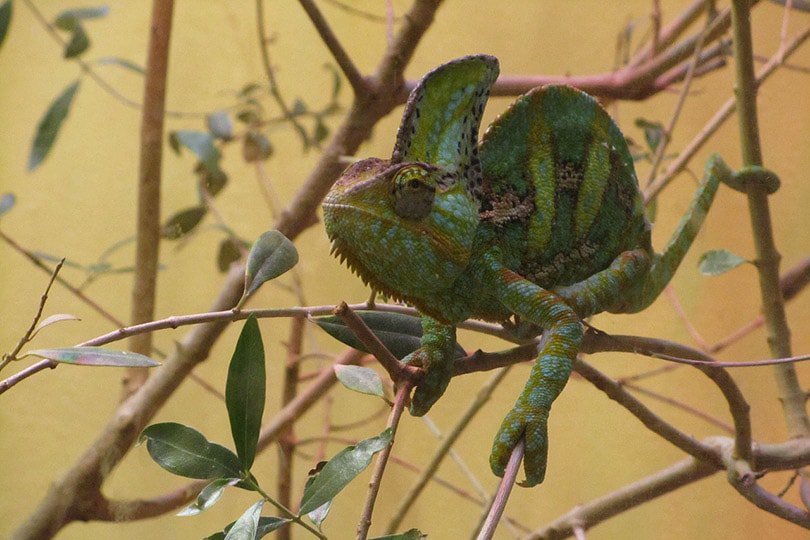All lizard species found in Hawaii were introduced from elsewhere in the world, and the one lizard that was native to the islands, the Hawaiian Skink, was declared extinct in 2013. There is still a handful of lizards to be found on the island, though, none of which are poisonous or pose any threat to humans, and no big lizards larger than a dozen or so inches.
The only native species of reptiles in Hawaii are several species of sea turtle and the Yellow-Bellied Sea Snake. All others have been introduced. Be that as it may, Hawaiian legends are full of tales of snakes and lizards, so there may have been more native species on the islands at some point in time.
Here are 10 of the most commonly found lizards on the Hawaiian islands.

The 10 Lizards Found in Hawaii
The 4 Invasive Lizards Found in Hawaii
1. Veiled Chameleon

| Species: | Chamaeleo calyptratus |
| Longevity: | 6–8 years |
| Good to own as a pet?: | Yes |
| Legal to own?: | No |
| Adult size: | 12–18 inches |
| Diet: | Omnivorous |
One of the most popular reptile pets in the continental United States, the Veiled Chameleon is invasive to Hawaii and illegal to import, export, breed, or keep as a pet on the islands. The Hawaii Department of Agriculture (HDA) has an amnesty program that allows individuals to turn in an illegal animal without being prosecuted, though. They are of concern in Hawaii due to their high reproductive capacity, preying on native insects and birds, and adaptability and tolerance for various living conditions.
2. Cuban Knight Anole
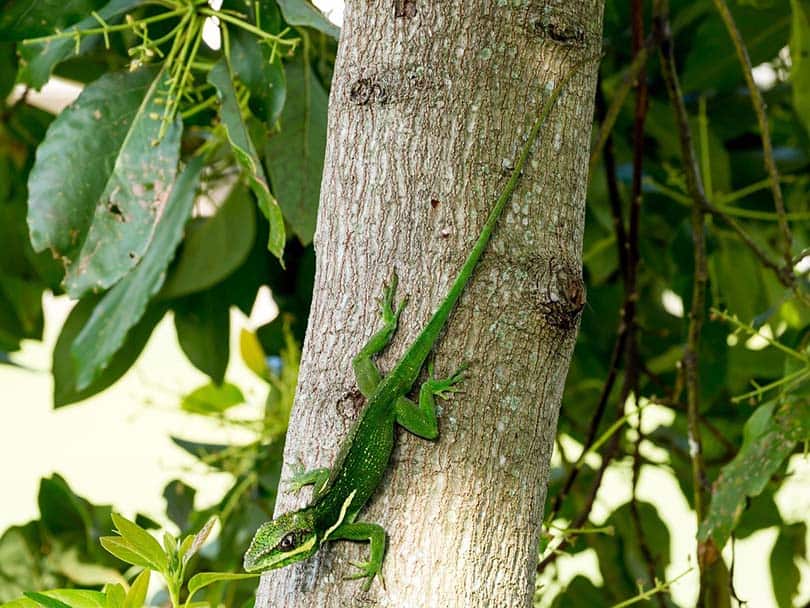
| Species: | Anolis equestris |
| Longevity: | 4–6 years |
| Good to own as a pet?: | Yes |
| Legal to own?: | No |
| Adult size: | 13–20 inches |
| Diet: | Omnivorous |
Cuban Knight Anoles are large lizards that are an invasive and illegal species in Hawaii. They are of concern because they are experts at climbing trees and are thus a threat to native bird species and their eggs. They are also known to be rather aggressive toward humans and may bite when threatened. Since these lizards are so camouflaged and spend most of their time high up in trees, they are not easily spotted and rarely reported to HDA officials.
3. Brown Anole
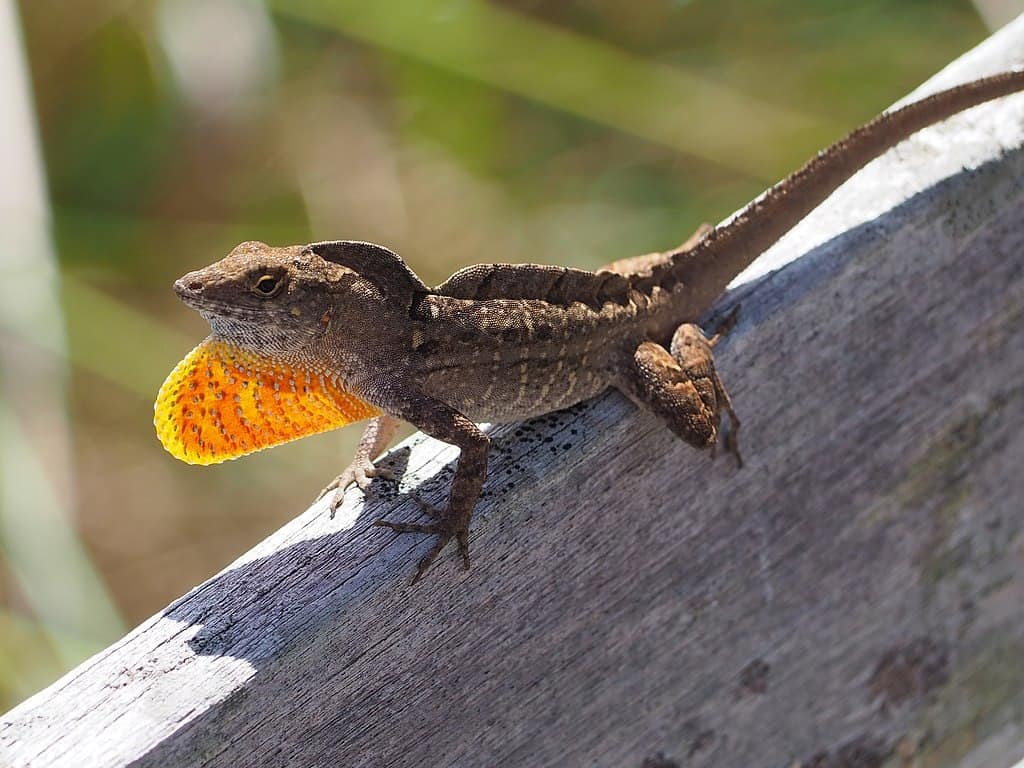
| Species: | Anolis sagrei |
| Longevity: | 3–5 years |
| Good to own as a pet?: | Yes |
| Legal to own?: | No |
| Adult size: | 8–9 inches |
| Diet: | Omnivorous |
The Brown Anole was first brought to Hawaii in the early 1980s, and their populations have been growing and thriving ever since. These lizards can breed extremely quickly, and their populations in certain areas can explode within a few short years. They will eat almost anything that they can fit into their mouth, including spiders, slugs, insects, and the young of other lizard species. Due to their hardiness and sheer numbers, they can quickly devastate populations of native insects.
4. Jackson’s Chameleon

| Species: | Chamaeleo jacksonii |
| Longevity: | 5–10 years |
| Good to own as a pet?: | Yes |
| Legal to own?: | Yes |
| Adult size: | 10–12 inches |
| Diet: | Omnivorous |
The Jackson’s Chameleon was first brought to Hawaii in the early 1970s and has now established populations on the islands of Maui and Oahu. Up until 1994, it was illegal to keep one of these chameleons as pets, but the ruling was since rescinded. However, it is still illegal to transport them between islands or commercially export them to the mainland, which can result in a $200,000 fine! They are a problem because they thrive in various forest environments and are a threat to the native insect species.
The 2 Small Lizards Found in Hawaii
5. Common House Gecko

| Species: | Hemidactylus frenatus |
| Longevity: | 5 years |
| Good to own as a pet?: | Yes |
| Legal to own?: | Yes |
| Adult size: | 3–5 inches |
| Diet: | Omnivorous |
The Common House Gecko most likely found their way to Hawaii on cargo ships sometime in the early 1800s and is one of the most commonly found lizards on the islands. They are generally docile lizards that do not pose a threat to humans but may bite if they feel threatened. Their color can vary from a yellow-brown to pale grey, and they often have small spots and other markings. These lizards are commonly kept as pets, and since they are so prolific in the wild, they are often wild-caught for the pet trade.
6. Gold Dust Day Gecko
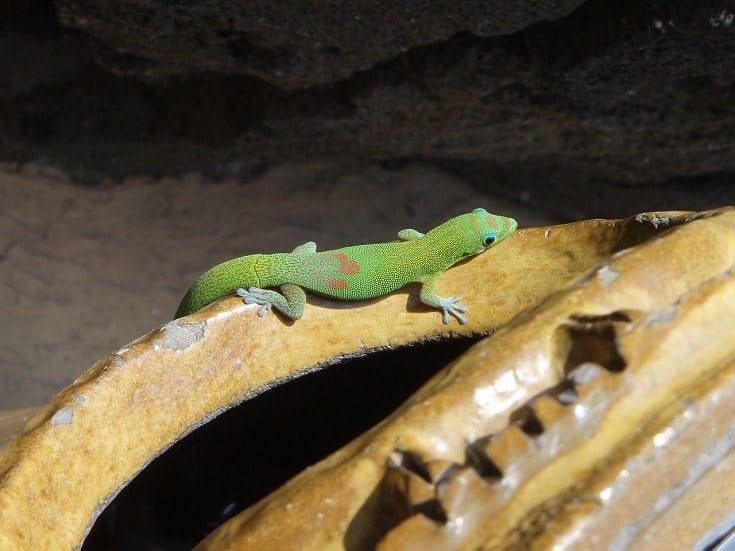
| Species: | Phelsuma laticauda |
| Longevity: | 7–10 years |
| Good to own as a pet?: | Yes |
| Legal to own?: | Yes |
| Adult size: | 4–6 inches |
| Diet: | Omnivorous |
Native to Madagascar and other islands off the east coast of Africa, the Gold Dust Day Gecko is believed to first have reached Hawaii in the 1970s, most likely released by university students. These lizards have a bright green coloration with blue around their eyes and red markings on their nose and tail. There are gold spots along their neck and back that give them their name. They are popular pets because they are easy to care for and can live for up to 10 years in captivity.
The Big Lizard Found in Hawaii
7. Madagascar Giant Day Gecko
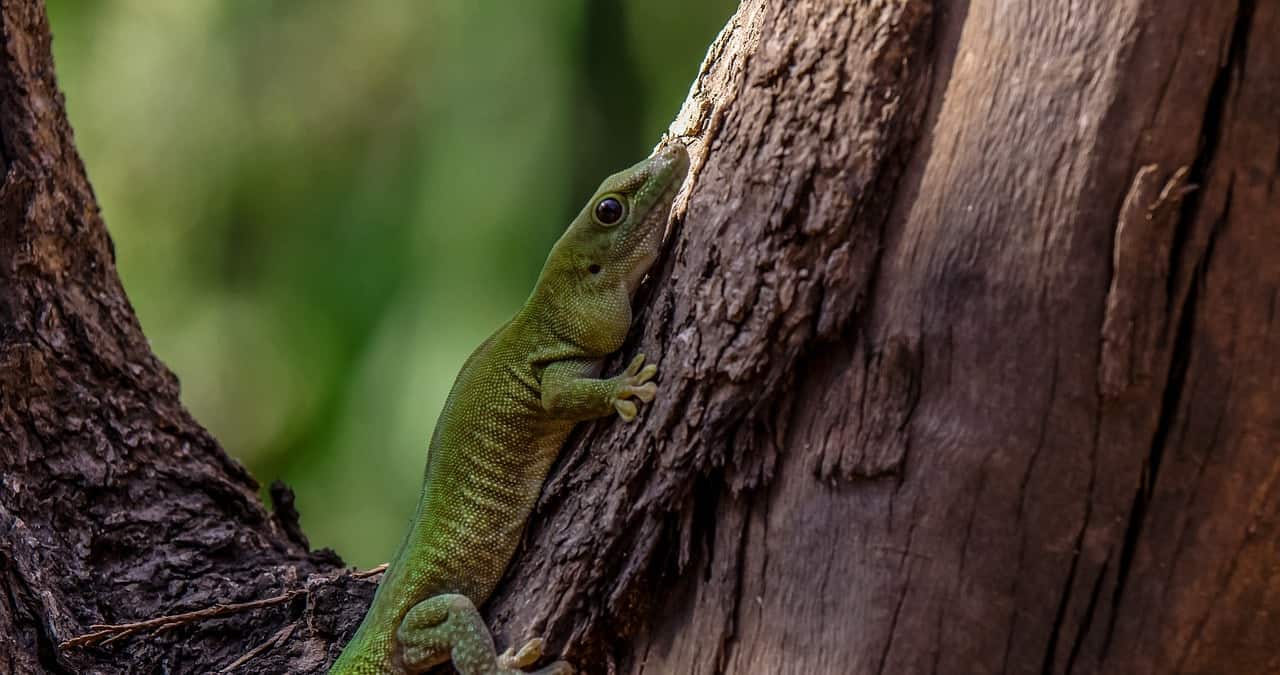
| Species: | Phelsuma madagascariensis |
| Longevity: | 10–15+ years |
| Good to own as a pet?: | Yes |
| Legal to own?: | Yes |
| Adult size: | 10–12 inches |
| Diet: | Omnivorous |
One of the biggest lizard species found in Hawaii, the Madagascar Giant Day Gecko is native to Madagascar and other small surrounding islands. They have become hugely popular in the pet trade due to their vibrant colors and ease of care, and the increase in captive specimens is leading to new morphs every year too. They typically have a light green or blue-green base color, with varying patterns and pattern colors.
The 3 Other Lizards Found in Hawaii
8. Stump-Toed Gecko
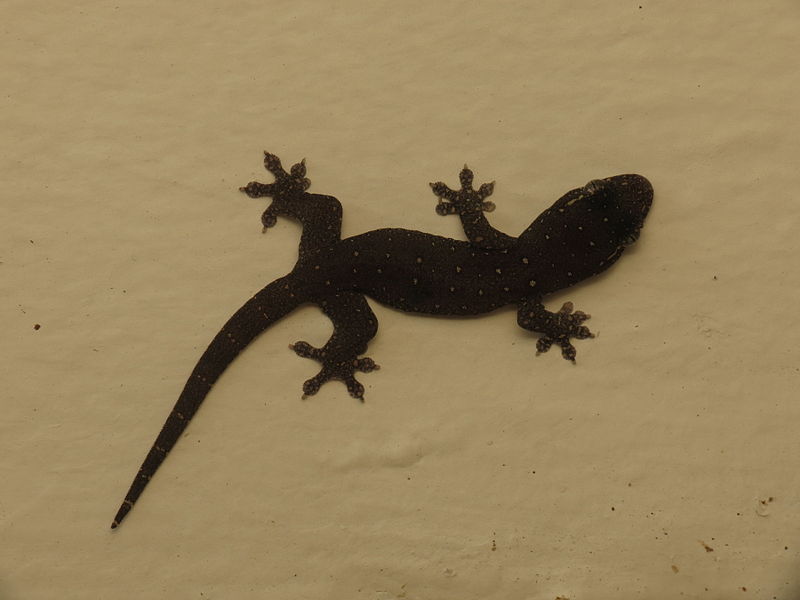
| Species: | Gehyra mutilata |
| Longevity: | Unknown |
| Good to own as a pet?: | Yes |
| Legal to own?: | Yes |
| Adult size: | 4–5 inches |
| Diet: | Omnivorous |
The Stump-Toed Gecko is considered an invasive species in Hawaii and is often seen on sandy beaches. They are stocky and plump in appearance, with delicate skin that is grey and with golden spots scattered on their back that diminish as they grow. Although they prefer woodlands and rocky areas, they are highly adaptable lizards that are commonly found in suburban homes too, and they don’t mind being around humans.
9. Orange Spotted Day Gecko
| Species: | Phelsuma guimbeaui |
| Longevity: | 7–10 years |
| Good to own as a pet?: | Yes |
| Legal to own?: | Yes |
| Adult size: | 5–8 inches |
| Diet: | Omnivorous |
The Orange Spotted Day Gecko is native to Mauritius and first appeared in Hawaii in the mid-1980s. They are often found in large trees in suburban neighborhoods. They are lime green in color, with orange markings on their back and tails and a gorgeous blue color on the back of their neck and shoulders. In addition to feeding on small insects and invertebrates, these geckos also enjoy lapping the nectar from flowers and the juice from ripe fruits.
10. Mourning Gecko
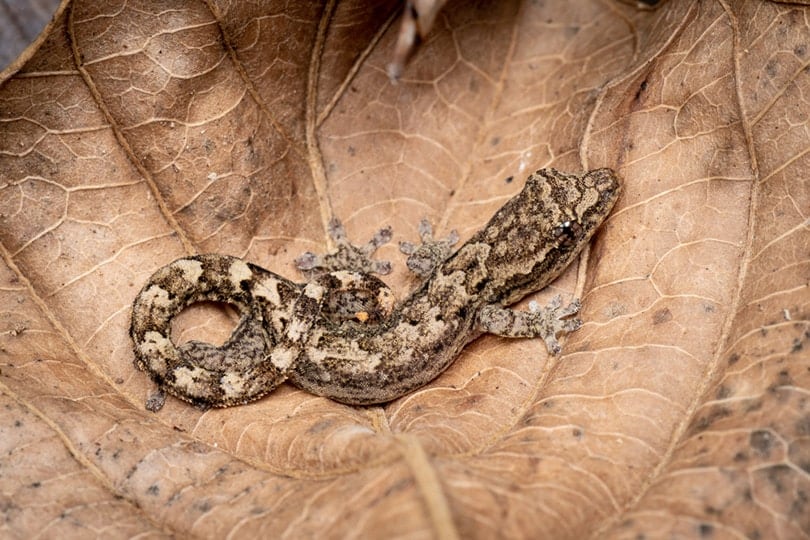
| Species: | Lepidodactylus lugubris |
| Longevity: | 7–10 years |
| Good to own as a pet?: | Yes |
| Legal to own?: | Yes |
| Adult size: | 3–4 inches |
| Diet: | Omnivorous |
Mourning Geckos are one of the most widespread gecko species in the world but are native to Southeast Asia. They are typically light brown in color, with a brown stripe running down the sides of their face and dark spots on their back. They have the ability to darken or lighten their skin color to better blend in with the background. Interestingly, these lizards are parthenogenic, meaning the females don’t need males to reproduce, and males are rare and often sterile.

Conclusion
While all the lizard species in Hawaii were introduced, there is certainly no shortage of interesting lizards on the islands. Many of these do not pose any threat to native animal and plant populations, but several do and are illegal to keep as pets, import, or export.
Next on your reading list:
Featured Image Credit: brasssun, Pixabay
